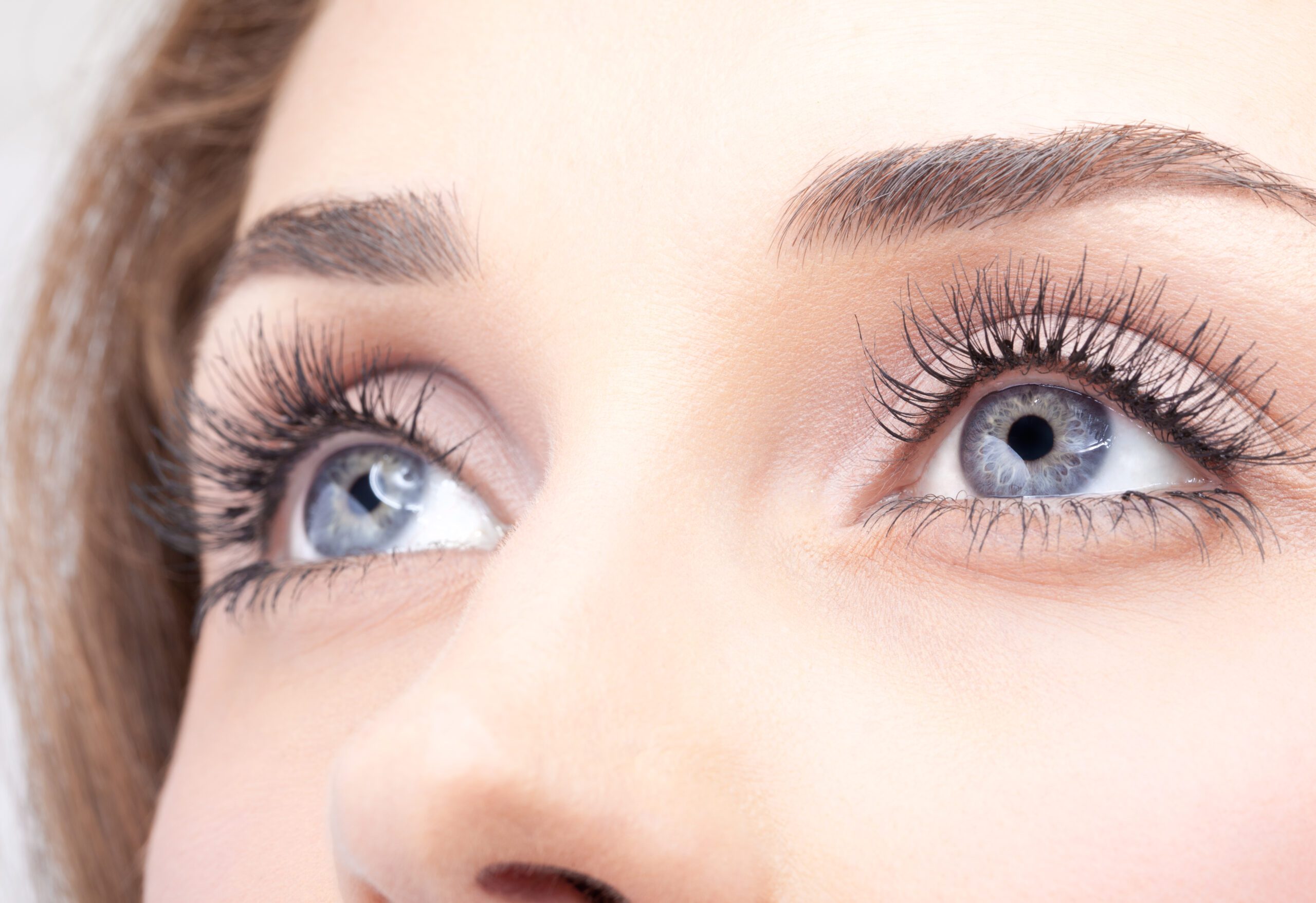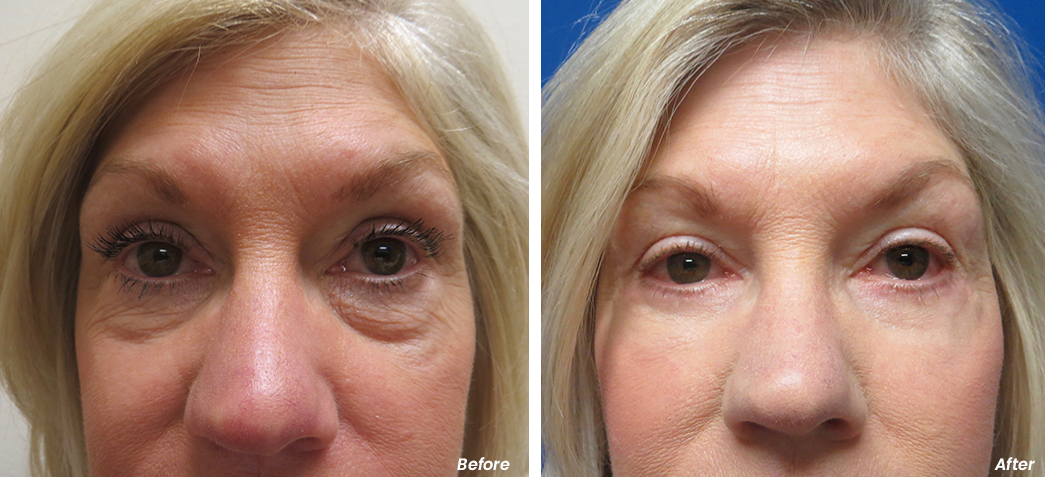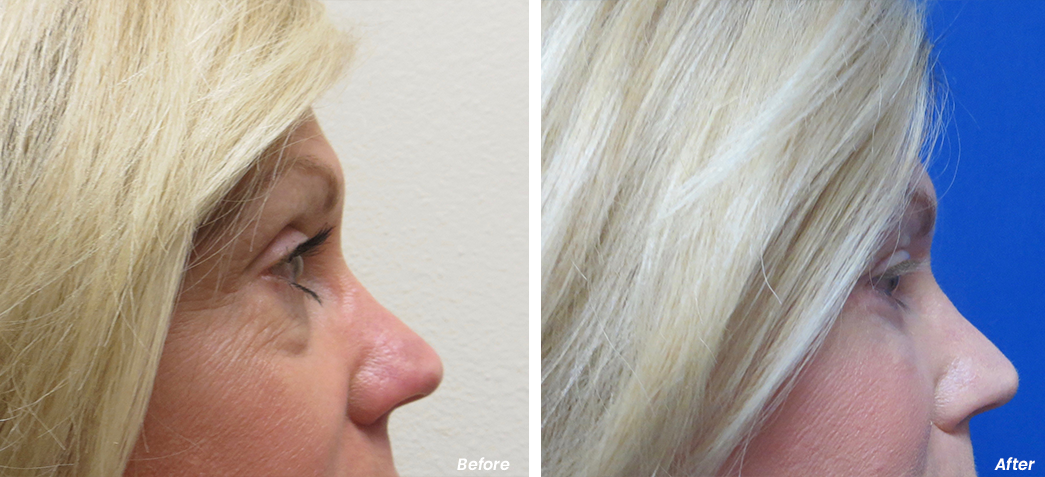
The delicate eye region is especially vulnerable to the aging effects of sun damage, genetic predisposition, fat depletion, stress, or smoking. To rejuvenate their eyes and regain a youthful look, many patients turn to eyelid surgery.
Eyelid surgery, or blepharoplasty, is a surgical procedure that involves removing excess skin, fat, and muscle from the eyelids to address sagging, under-eye bags, and hooded eyes. It provides a more comprehensive and long-lasting solution for severe under-eye aging and has gained widespread popularity as a cosmetic procedure.
What is Lower Blepharoplasty?
As we age, it is common to experience wrinkling, puffiness, or sagging under-eye bags. Lower blepharoplasty procedures offer a solution by addressing these concerns. During the procedure, we remove or reposition fat deposits located beneath the lower eyelid to create a smoother and tighter under-eye area. Laser resurfacing is often performed to further tighten the skin and eliminate fine wrinkles, enhancing surgical results. Lower eyelid surgery is widely regarded as the most effective and enduring method for treating under-eye bags.
Lower Blepharoplasty Before and After
This patient had prominent undereye bags and tear troughs before her eyelid surgery. Now, her under eyes are brighter and lifted.
From the profile view, you can see the patient’s upper cheek and lower eye areas have a more youthful contour.
Lower Eyelid Surgery Procedure Overview
Before the surgery, we will meet for a consultation to evaluate your specific concerns, examine your lower eyelids, and discuss your desired outcomes. Once we decide on a treatment plan, we’ll book your surgery.
Lower blepharoplasty can be performed using local anesthesia with sedation or general anesthesia. The choice depends on your surgeon’s recommendation and your comfort level. During the procedure, we’ll create small incisions inside the lower eyelid or just below the lash line on the lower eyelids. The exact location and length of the incisions will depend on your unique anatomy and the surgical technique used.
If excess fat deposits are contributing to under-eye bags, we will carefully reposition or remove them to achieve a smoother contour. In some cases, excess skin may be trimmed or tightened to eliminate wrinkles and sagging. Laser resurfacing may also be performed to further enhance skin tightening and remove fine wrinkles.
Lower Blepharoplasty Recovery and Aftercare
To optimize healing, we ask our patients to follow these recovery guidelines after their blepharoplasty:
- Post-Incision Care: Handle your incisions gently and refrain from rubbing your eyes. Keep the area dry and clean. If your stitches are dissolvable, they will naturally dissolve. In case sutures are used, we will schedule a follow-up appointment one week after the surgery to remove them.
- Cold Compress: On the day of the procedure, apply a clean damp gauze or washcloth with cool water to your eyes for 15-minute intervals, alternating with 15-minute breaks. On the second day, continue applying these compresses for 15 minutes at a time, five times throughout the day.
- Medications: You will be prescribed an antibiotic eye ointment to aid in healing and prevent incision infection. If you have laser treatments, a post-surgical ointment, and mask will be provided. For pain management, take Tylenol and/or Advil as directed.
- Contact Lenses: Avoid wearing contact lenses for two weeks following the surgery.
- Bathing and Swimming: You may shower 48 hours after the procedure, but refrain from submerging your face in water for three to four weeks.
- Makeup: Refrain from applying makeup on or around the eyes until you receive clearance from your surgeon, typically around two weeks post-surgery. Consider replacing any old makeup, especially liquid eyeliner or mascara, to reduce the risk of infection.
- Exercise: Take it easy for at least one week and avoid vigorous exercise or heavy lifting.
- Laser Treatments: Laser treatments for the under-eye area can be beneficial in promoting collagen and elastin production, leading to improved tightening and a more youthful skin appearance.
What About Tear Trough Fillers?
Sometimes healthcare providers will recommend injecting fillers into the tear trough area to reduce the appearance of undereye bags. At best, undereye fillers will temporarily add volume to the trough, but these generally don’t age well. Over time, the filler may migrate down the cheek due to gravity, causing lumps and bumps under the eye instead of a smooth, youthful contour.
Undereye fillers can also be dangerous and lead to blindness. The lower eyelid and tear trough areas have a complex network of blood vessels. Improper filler placement or accidental injection into a blood vessel can lead to blockages or occlusions. This can result in tissue damage, tissue necrosis, or even blindness if the retinal artery is affected. Overall, I steer my patients away from getting undereye fillers. It’s worth it to invest in a surgical procedure with a qualified, board-certified plastic surgeon who has a deep knowledge of periorbital anatomy to achieve safe and durable results.
Reverse Eye Area Aging With Minimal Downtime
Our experienced, board-certified plastic surgeons would love to bring you in for a lower blepharoplasty consultation to discuss your goals and treatment options.






